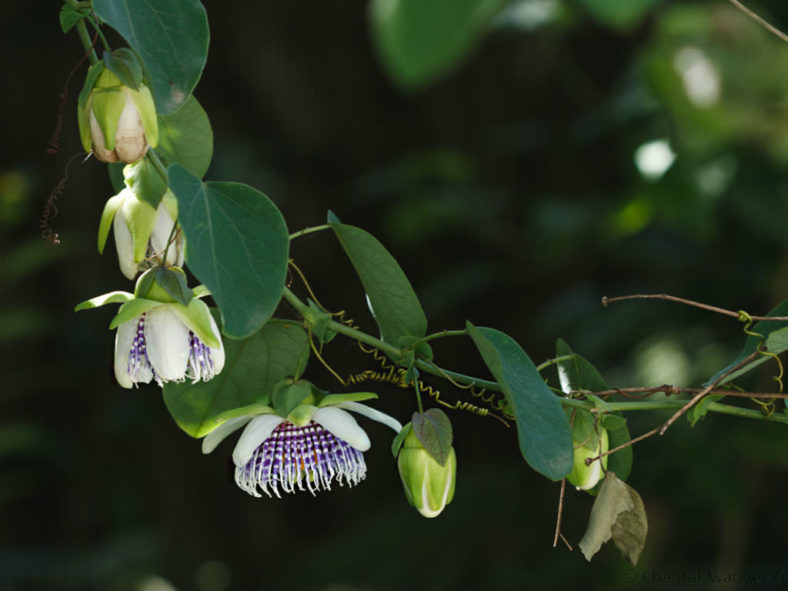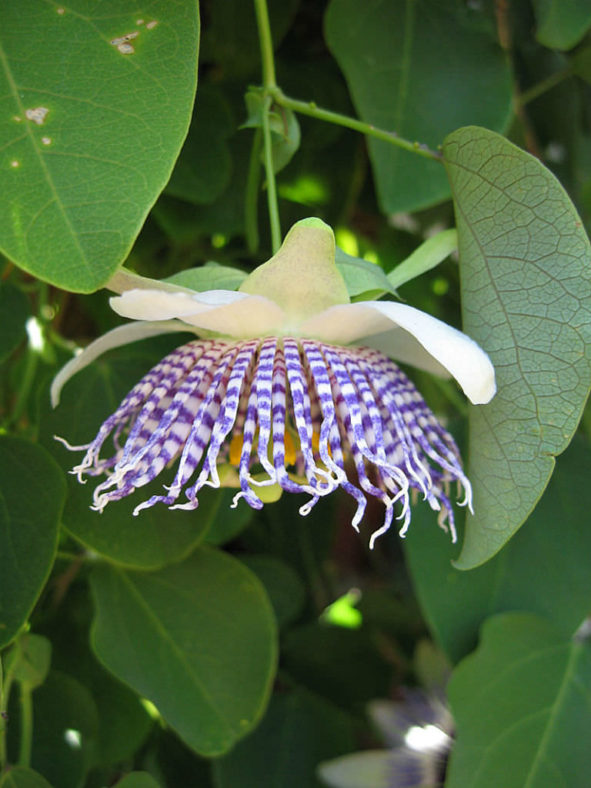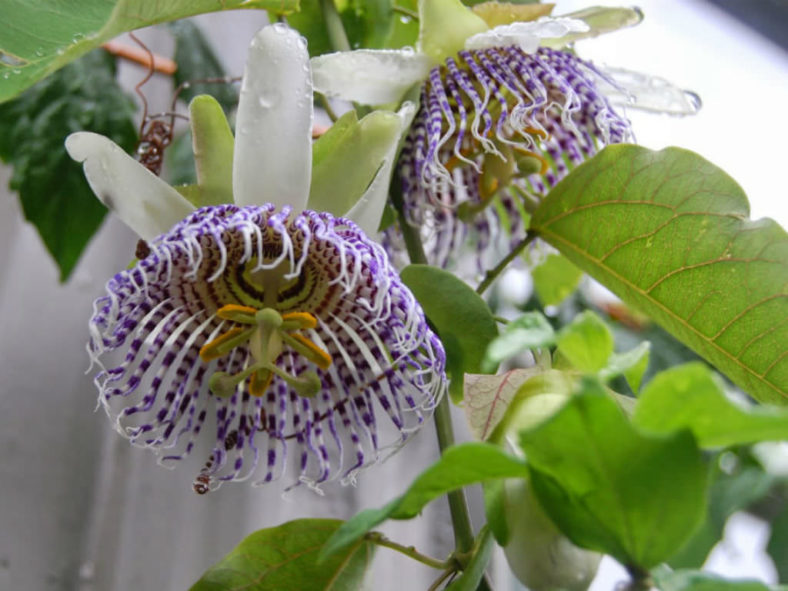Scientific Name
Passiflora actinia Hook.
Common Name(s)
Sea Anemone Passion Flower
Synonym(s)
Passiflora paulensis
Scientific Classification
Family: Passifloraceae
Genus: Passiflora
Origin
Passiflora actinia is native to Brazil.
Flower
Color: White, mauve, and blue
Bloom Time: Early spring
Description
Passiflora actinia is a relatively fast-growing evergreen perennial vine with heart-shaped leaves. Vines may grow a dozen feet (3.7 m) in a season and are multi-branching climbers.
It flowers mainly in early spring, producing white, mauve, and blue flowers up to 3.6 inches (9 cm) in diameter. They bloom for a day or two. Rounded, orange-yellow, ripening fruits follow and grow to an inch (2.5 cm) or more.

Hardiness
USDA hardiness zone 9a to 10b: from 25 °F (−3.9 °C) to 40 °F (+4.4 °C).
How to Grow and Care
Their vibrant colors and heady fragrance make the Passion Flower a welcome addition to any garden. Unfortunately, most Passion Flower plant species can't overwinter in many gardens in the United States because of their origins. However, a few will survive up to USDA plant hardiness zone 5. Most varieties will grow in Zones 7-10.
Because they are vines, the best place for growing Passion Flower is along a trellis or fence. The tops will be killed off during winter, but if you mulch deeply, your Passion Flower plant will return with new shoots in the spring. Since growing Passion Flowers can reach 20 feet (6 m) in a single season, this dies back will help keep the vine under control.
Passion Flowers need full sun and well-drained soil. Two applications of a well-balanced fertilizer per year, once in early spring and one in midsummer, is all the Passion Flower care you will need.
See more at How to Grow and Care for Passion Flowers.
Links
- Back to genus Passiflora
- Plantpedia: Browse flowering plants by Scientific Name, Common Name, Genus, Family, USDA Hardiness Zone, or Origin
Photo Gallery
Click on a photo to see a larger version.




